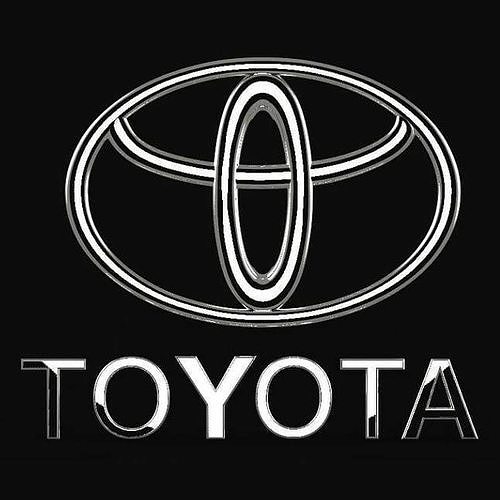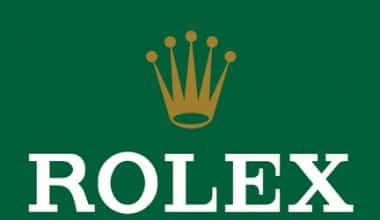Are you familiar with the history of the Toyota logo? The Toyota logo is one of the most well-known images in the automobile landscape, both among Japanese consumers and automobile operators worldwide.
As the Toyota brand has evolved, the car logo has undergone several changes. It now consists of three ovals that have been carefully designed to resemble the shape of a “T.”
Even if you don’t know much about the inspiration behind the Toyota symbol, chances are you’ve seen one of these badges at some point.
Let’s take a closer look at the Toyota logos over the years…
Toyota Logo: Overview
Few people are aware that one of the most well-known Japanese automakers was founded as Toyoda, a textile and loom manufacturing company. The company was named after its founder, Kiichiro Toyoda, and was renamed Toyota when it decided to expand into the European and American markets in the 1940s.
The Japanese automaker places a high value on symbolism and hidden meanings, as evidenced by their current logo, designed in the 1980s. This elegant and smooth emblem can represent the company’s and its customers’ hearts, the entire world around the brand, and, of course, the stylized letters of the company’s name.
Toyota underwent four redesigns before creating the iconic oval logo to find the perfect graphical representation of its core values and character.
What Exactly is Toyota?
Toyota, founded in the 1930s, is one of Japan’s largest and most well-known automobile manufacturers. The company produced weaving machines with varying degrees of automation until 1935. Kiichiro Toyoda insisted on opening an automotive department only in 1933.
Toyota’s Historical Background
Despite its success in the automobile industry, Toyota did not begin by selling vehicles. At the very least, Toyota’s parent company did not. Instead, the company, known then as Toyoda Automatic Loom Works, began selling textiles and automatic looms. However, in the early 1930s, the Japanese government began pressuring Toyoda to expand into automobile manufacturing to supply the country’s ongoing war with China. Kiichiro Toyoda, the company’s founder’s son, traveled to Europe to study the complexities of automobile production, and the company produced its first Type A engine in 1934. A year later, Toyoda produced its first vehicle, the Model AA passenger car.
Soon after, the automobile manufacturing division of Toyoda Automatic Loom Works spun off into its own company, Toyota. The single-letter change was because the new name consisted of eight strokes in the Japanese spelling of the word—a lucky number in Eastern culture.
Read Also: MERCEDES BENZ: The Untold Story of the World’s No. 1 Car Brand
During World War II, Toyota focused on producing simple trucks for the Japanese military. Toyota’s contribution to the Japanese war effort was recognized by Allied forces, who planned a bombing raid on their factories, which would have likely crippled the young company. However, fortunately for Toyota, the war ended before the attack could be carried out.
Even though the war was over, Toyota still faced numerous challenges. The Japanese economy was crippled, and Toyota was on the verge of bankruptcy for several years. Despite this, the company persevered and gradually began to grow. Toyota had exported its one-millionth automobile by the end of the 1960s.
Toyota now controls a sizable portion of the global automobile market by selling low-cost, fuel-efficient trucks, cars, and SUVs. It is also Japan’s second most profitable company, trailing only fellow Japanese automaker Mitsubishi. But what role did Toyota’s logo play in its success, and how did it become?
Toyota Logo: Evolution
1935
The first Toyoda logo was created in the 1930s and featured a red and white diamond shape with an inscription in the center. The lettering was done in a bold, smooth, same-serif typeface that perfectly reflected the brand’s power and professionalism. The diamond shape represents excellence and symmetry, both of which are very important to the company.
The red and white color scheme represents passion, love, and energy. Along with monochrome, which first appeared on the Toyota logo in the 1950s, these two colors have become synonymous with the brand.
1949
The Japanese version was created in 1949. It was the only official logo for the first ten years, but in 1958, a new international version was designed. Nonetheless, the company continued to use the Asian edition until 1989.
It was a large red circle with a white outline and white hieroglyphs that said “Toyota.” Simple and delicate, but also very traditional and modern. The red circle is a symbol that is synonymous with Japan.
1958
In 1958, the first logotype for the American market was created. It was a straightforward black-on-white inscription in all capitals. The lettering was done in a bold serif typeface that resembles Times New Roman and Nimbus Roman Japanese Bold, with clean yet elegant lines that perfectly represent the brand.
1969
In 1969, the wordmark’s style was changed to sans-serif. The company name was written in black using a custom typeface similar to Hypersans Heavy but slightly narrower.
The brand appeared more modern and progressive by simplifying the logo’s lines.
1978
In 1978, the color scheme was changed back to red and white. The current logotype features bolder and more balanced lines than the previous version. The letter tails and bars have been slightly shortened to appear more confident. The new inscription is in a sans-serif font similar to Sole Sans Extended Semi Bold.
Though red is Toyota’s primary corporate color, the logotype can now be seen in monochrome, grayscale, and traditional red-on-white.
1989
The iconic oval emblem was created in 1989 and has not been altered. The Toyota logo comprises one large horizontally placed oval with two smaller overlapping ovals inside.
As previously stated, the ovals have several meanings; the most interesting is that they form every letter of the company’s name, the most obvious of which is “T” and “O.”
It is a perfect representation of one of the world’s most influential automobile brands, being elegant, timeless, and futuristic simultaneously.
2005
The red graphical emblem moves above the lettering and becomes three-dimensional with the 2005 redesign, changing its color to gradient silver. The badge is also enlarged, and the contours of the emblem are encouraged, while the inscription parts remain largely unchanged, except the shade of red becomes darker and deeper. As the emblem on the bonnet of famous Japanese cars looks the same, this is probably the most famous Toyota logo ever created.
2019
The Toyota visual identity redesign, which took place in 2019, refined the contours of the iconic emblem and drew it in white on a solid red square above the modern black sans-serif logotype. The typeface of the wordmark in the new version is similar to the previous one, but because of the new color, it appears more stylish and confident.
2020
In 2020, the Japanese brand decided to simplify its visual identity by removing the text, leaving only the iconic Symbol as a logo element. Its contours were refined, but the shape and line thickness of the badge remained unchanged. The Toyota logo’s new official color palette is monochrome, and the Symbol can be seen in white or black when placed on dark backgrounds.
Toyota Symbol
The symbolism of the Toyota logo differs for clients from the East and clients from the West. So, for Japanese and residents of neighboring countries, the smaller oval represents the client’s heart, the second the heart of the Toyota car, and the largest the brand’s limitless possibilities for both hearts. In addition, mutual intersections of lines have meaning, symbolizing strong and mutually beneficial relationships between the enterprise and the client.
Toyota Emblem
Toyota’s logo has undergone several transformations throughout history, gaining volume and changing slightly in size. Major changes were avoided, except for the color changes that led to the logo’s current monochrome. Of course, we’re referring to the current logo (the very first company logo was a hieroglyphic sign, which was far too complicated and meaningless to the Western consumer). However, the new one, chosen from over 46 thousand options (the company announced a contest for the best logo in 1936), is equally well-read by Western and Eastern consumers. For the Westerner, the capital letter “T” is easily read; for the Easterner, the philosophy of the logo and the entire brand is complex enough to warrant respect.
2D Symbol
Toyota’s two-dimensional emblem repeats the iconic stylized badge of several ellipsoids, forming the letter “T” enclosed in a horizontally oriented frame. The execution of the emblem is identical to that of the primary logo, which was introduced in 2020 — in a black-and-white color palette with plain flat lines. Still, it looks powerful and very modern due to the clean and strict contours.
Toyota Logo Font
The Toyota font was created with the goal of gaining access to the international market in mind. Following these plans (which were more than ambitious for a Japanese enterprise in the first third of the twentieth century), the font had to correspond to the restraint of Western civilization’s expectations while being perceived as sufficiently reliable and authoritative.
Toyota Logo Color
The logo’s current color is silver metallic. However, this was not always the case. So, at various points in its history, the logo was even used in Toyota’s corporate red color. And all because, as the company says, the changes are necessary to maintain interest in the brand, but the logo is good enough to change significantly. Furthermore, the current logo is a kind of personification of the company, a mirror of its spotless reputation. Preserving this mirror in this form is in the manufacturer’s and customers’ best interests.
What Is the Toyota Logo’s Hidden Meaning?
The company has yet to reveal the exact meaning of this particular emblem. As a result, there are numerous interpretations available today. The first and most common is a stylized image of a thread threaded into a needle, representing the company’s roots.
What does the Toyota logo represent?
The idea of progressive development is represented by three ellipses of varying sizes, with the small one representing the heart of the client, the horizontal one representing the heart of the product, and the outer one representing the company’s mission, which is a developing of technologies and innovations approach.
What is the significance of the Toyota logo?
Initially, the brand name was used as the logo, but as it grew in popularity, an emblem that could be mounted on the hood of the car and customers would recognize the brand by this figurine was required. The logo’s internationality was the second most important criterion.
The Toyota Logo’s Popularity
Despite its successes, the Toyota logo has never achieved the same popularity as the Ford and Chevrolet logos. However, it may be unfair to compare the popularity of the Toyota logo to two competitors as steeped in tradition and national appeal as Ford and Chevy.
Though there aren’t nearly as many shirts and hats with the Toyota logo, the design has served all of its intended purposes. Toyota created a simple logo with a complex message. They also created a logo that is recognizable and appealing in all countries where they sell vehicles.
Finally, the entire pages dedicated to the design and history of the Toyota logo on Toyota’s website are a great testament to the popularity of the Toyota logo and the importance the company places on it. A visit to these pages demonstrates Toyota’s pride in its logo and is another excellent example of the value a good logo design can have.
How Toyota Can Assist You in Developing Your Logo
Toyota’s logo history can certainly help you create your own. First, whether it was for its first or second logo, this car brand was heavily influenced by its country when developing its image. Even today, the company’s brand image incorporates red, a color associated with Japan. Furthermore, if you want to create a unique logo, avoid copying your competitors. This is exactly what Toyota did by choosing a color palette that differed greatly from American brands.
Toyota then knew how to use shapes to create some of its logos. The circle is commonly used in the automotive industry, but combining them has created an emblem recognized worldwide. Finally, don’t be afraid to redesign your logo if necessary, as Toyota did. A redesign can be beneficial if you want to enter new markets, introduce revolutionary products, or simplify an overly complex logo. Remember that the current logo trend is minimalism.
Finally, as can be seen, Toyota is a company that has been able to adapt over time. Whether by changing its name or creating different logos, this car company has carved out a place for itself among the major manufacturers through bold decisions. Do you know what the circles in the Audi logo represent now that you know what the Toyota logo represents? Given the industry’s competition, automotive brands have no choice but to have strong brand images.
Related Articles
- BEST CAR BRANDS for Reliability in 2023 (Top Picks & All You Need)
- What Are the Most Reliable Car Brands of All Time? (Extensive 2023 List)
- BEST DELIVERY CAR 2023: Best Car Options for Your Delivery Business in 2023
- Toyota Financial: Toyota Reviews 2023( + Top Toyota services app, login, Address, and Payoff number)
- STOCKING STUFFER: Top 30+ Stocking Stuffers in 2023
References






